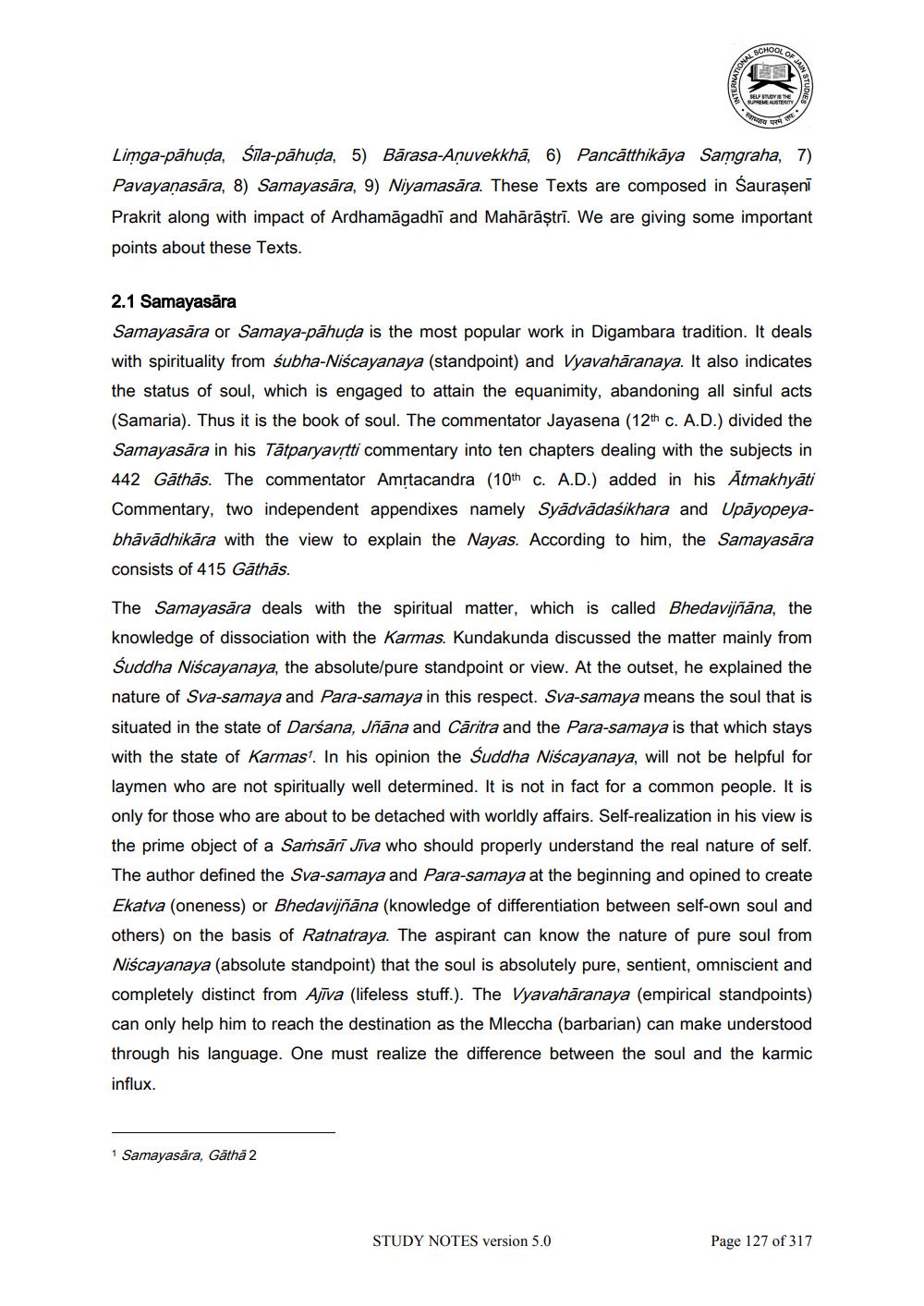________________
Limga-pāhuda, Sīla-pāhuda, 5) Bārasa-Anuvekkhā, 6) Pancātthikāya Samgraha, 7) Pavayaņasāra, 8) Samayasāra, 9) Niyamasāra. These Texts are composed in Śaurașenī Prakrit along with impact of Ardhamāgadhi and Mahārāștrī. We are giving some important points about these Texts.
2.1 Samayasāra Samayasāra or Samaya-pāhuda is the most popular work in Digambara tradition. It deals with spirituality from śubha-Niscayanaya (standpoint) and Vyavahāranaya. It also indicates the status of soul, which is engaged to attain the equanimity, abandoning all sinful acts (Samaria). Thus it is the book of soul. The commentator Jayasena (12th C. A.D.) divided the Samayasāra in his Tātparyavrtti commentary into ten chapters dealing with the subjects in 442 Gāthās. The commentator Amrtacandra (10th C. A.D.) added in his Ātmakhyāti Commentary, two independent appendixes namely Syādvādaśikhara and Upāyopeyabhāvādhikāra with the view to explain the Nayas. According to him, the Samayasāra consists of 415 Gāthās.
The Samayasāra deals with the spiritual matter, which is called Bhedavijñāna, the knowledge of dissociation with the Karmas. Kundakunda discussed the matter mainly from Śuddha Niscayanaya, the absolute/pure standpoint or view. At the outset, he explained the nature of Sva-samaya and Para-samaya in this respect. Sva-samaya means the soul that is situated in the state of Darśana, Jñāna and Caritra and the Para-samaya is that which stays with the state of Karmas'. In his opinion the Suddha Niscayanaya, will not be helpful for laymen who are not spiritually well determined. It is not in fact for a common people. It is only for those who are about to be detached with worldly affairs. Self-realization in his view is the prime object of a Saṁsārī Jiva who should properly understand the real nature of self. The author defined the Sva-samaya and Para-samaya at the beginning and opined to create Ekatva (oneness) or Bhedavijñāna (knowledge of differentiation between self-own soul and others) on the basis of Ratnatraya. The aspirant can know the nature of pure soul from Niscayanaya (absolute standpoint) that the soul is absolutely pure, sentient, omniscient and completely distinct from Ajīva (lifeless stuff.). The Vyavahāranaya (empirical standpoints) can only help him to reach the destination as the Mleccha (barbarian) can make understood through his language. One must realize the difference between the soul and the karmic influx.
1 Samayasara, Gatha 2
STUDY NOTES version 5.0
Page 127 of 317




